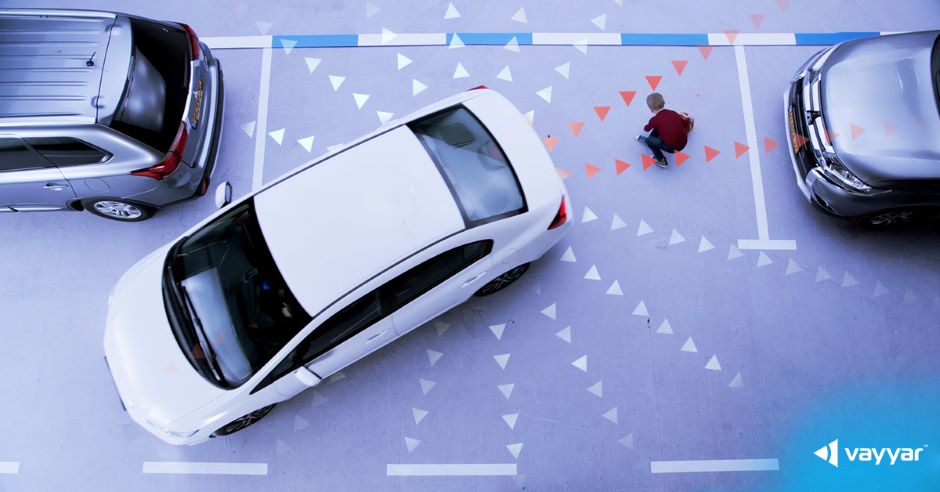All automotive OEMs and Tier 1s face the ongoing challenge growing modern safety standards. Different sectors of the global market have varying requirements, and the transformation to autonomous, electric mobility is escalating complexity and costs by increasing the number of electronic sensors required per vehicle.
Sensory overload
Around 22 billion sensors are fitted in vehicles annually with IHS Markit forecasting a 40% increase in sensor-related costs from 2018 to 2030. On the current trajectory, and with more stringent safety standards, a mainstream car model will require around 200 sensors by 2030.
CLICK FOR MORE FROM AUTOMOTIVE
As OEMs and Tier 1s grapple with new safety protocols and regulations and endeavour to ensure that vehicles built today can comply with the safety standards of tomorrow, the temptation is to add yet more sensors. But introducing further cost and complexity, and increasing vehicle weight — which limits electric vehicle range — is not a sustainable solution.
Single-sensor solution
Solving the problem requires automakers to revisit the legacy industry model built around one sensor performing just one function. Crucially, replacing numerous sensors with a multifunctional, scalable platform is now entirely possible thanks to game-changing 4D imaging radar sensor technology.
A single RoC (Radar-on-Chip) sensor can replace multiple in-cabin sensors, supporting numerous advanced safety applications. Externally, fewer than four sensors are required to do the work of 20 individual, single-function ADAS sensors. This will enable automakers to save hundreds of millions of dollars per year in vehicle development and meet the Euro NCAP safety requirements.

Superior imaging provision
A 4D imaging RoC features up to 48 transceivers, an internal digital signal processor (DSP) and a microcontroller unit (MCU) on-chip for real-time signal processing. Capable of seeing through objects and able to operate effectively in all weather conditions, this single-chip solution simplifies safety ecosystems and negates the need for expensive LIDAR, cascaded-radars and cameras.
Unlike traditional radar solutions that are based around 2 to 3 transmitting antennas and 3 to 4 receiving antennas, 4D imaging radar leverages a Multiple Input Multiple Output 48-antenna array for high-resolution mapping of its surroundings. The rich point cloud data output combined with an ultra-wide azimuth-elevation field of view, delivers detection and tracking with pinpoint accuracy, making it the ultimate safety sensor for the road ahead.
The technology is the first to support both automotive regulatory frequency bands: 60GHz and 79GHz, providing exceptionally high resolution for unsurpassed precision and detail. It offers a ten-fold improvement in imaging, providing a 5cm pixel compared with the 50cm pixel provided by time-of-flight radar. Thanks to its unprecedented accuracy, the single-chip technology covers two seating rows, locates each passenger, differentiates between adults and children and even detects a sleeping baby under a heavy blanket.

Enhanced safety for all
Mass-production-ready, cost-efficient and simple to integrate into existing automotive platforms, the technology minimises both indirect costs, such as integration and development, and direct costs such as hardware, software and wiring.
AEC-Q100 qualified and fully compliant with ASIL-B, Euro NCAP COP + SA (2020-2025), NHTSA and GTR safety requirements, 4D RoC technology will enable manufacturers to significantly enhance vehicle occupant protection. For example, earning a five-star Euro NCAP safety rating will be within reach of all automakers and customers, regardless of budget. Its price point is similar to a single-function 3x4 2D/3D radar solution, but with substantial added value.
Automotive safety systems can also be future-proofed, as this scalable technology enables the addition of more functions over time, ensuring adherence to emerging requirements and keeping automakers ahead of the game.
Replacing multiple sensors with a multifunctional, cost efficient 4D imaging radar platform delivers a revolutionary level of safety utterly unobtainable with traditional single-function sensors, cuts costs and complexity. This approach also helps OEMs and Tier 1s close the gap between rising safety demands and feasible tech adoption, ensuring that affordable, uncompromising safety is available to all.
Ian Podkamien, Head of Automotive at Vayyar










UK Enters ‘Golden Age of Nuclear’
The delay (nearly 8 years) in getting approval for the Rolls-Royce SMR is most worrying. Signifies a torpid and expensive system that is quite onerous...